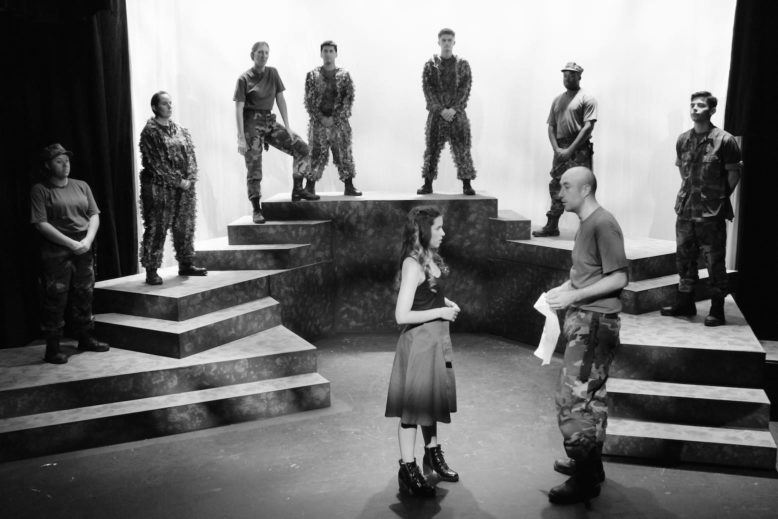Our Theater date took us back to Stages in Fullerton. We enjoy small theaters, as they show wonderful creativity in overcoming their limitations. Our first foray to Stages was to see Urinetown which had a large cast in a small space. One result of this is that the cast acts very close to the audience. Another is that the sets must be modular (if scenery changes are required) and can be very 3-D (Urinetown was two-layered and used the upper level creatively.)
Last night we saw a “New Shakespeare Play” called “All The World’s A Grave.” In the modern era, one might expect such a title to mean a vampire or zombie play (Those are SOOOOO overdone!). But it was a classical Shakespearean tragedy — a mashup of half a dozen plays.
Hamlet, Prince of Bohemia, returns from a foreign war against Lear with a war bride — Lear’s
What could go wrong?

The play is gender-fluid. Lear is actually a Queen —
The story is basically a re-shuffling of all these tales, using the original lines with a few twists (Bohemia for Denmark, for example). Does it add anything to the Shakespeare canon? No, and it has pretty creaky contrivances, but then it only lasts about half as long as a full-text Hamlet.
Several of the players are standouts. Lear has a small part, but Rose London displays her mighty chops in the final scene. This is basically Iago’s story, and Christine Cummings carries a lot of weight with unexpected humor and nary a slip of the lip.
But Abel Garcia is a very American Hamlet — not like the British interpretations of a lad going quietly mad. Garcia transmogrifies the character from the initial scenes of a rather easy-going, humorous, and happily married war hero to a raging, ranting, screaming, haunted, and tormented demon. He slaps his poor and puzzled wife around, pulls a knife on his mother, terrorizes his troops — and this all of three feet away from our seats at front-row center. I was hoping that the daggers they all carried were really props.
At community theater prices, this was an evening chock-full of entertainment. The interpretations of well-known characters and tropes are interesting. But as someone once said — “The play’s the thing …” and this really adds nothing to the canon. It can be distracting at times as audience members try to remember which lines and situations came from which plays. For example, near the end, when Hamlet is stalking Romeo with murderous intent, he does a great Jack Nicholson impression (where Jack bursts through the door in “The Shining” and shouts “He-e-e-re’s JOHNNY!”) as he chases his prey across the stage and taunts him with “Romeo, Romeo, wherefore art thou Romeo?”
I am not a Hamlet fan-boy but I’ve seen most of the major portrayals on film (and some of the minor ones). This is an original take on Hamlet — and on the whole five-act Elizabethan drama oeuvre .
I would certainly recommend it to anyone who can sit through a traditional Shakespearean tragedy.
STAGEStheatre
400 E Commonwealth Ave #4
Fullerton, CA 92832